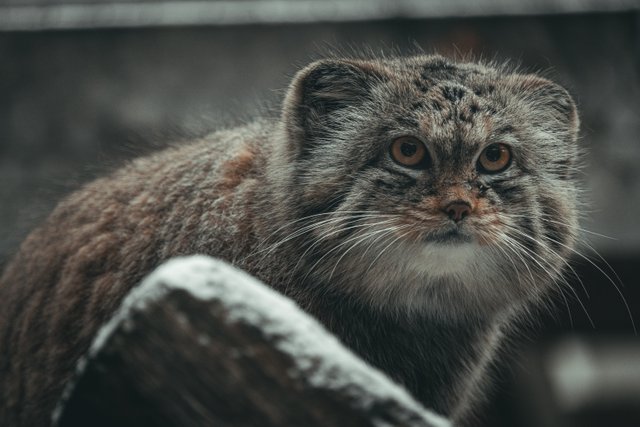The Manul, or Pallas's cat, is a small wildcat species native to the grasslands and montane steppes of Central Asia, including Mongolia, China, and Russia. It is recognized for its unique appearance and distinct personality.
With a stocky body and short legs, the Manul has a rather stout and chubby appearance. It has thick fur, which is pale gray or yellowish-gray in color, providing excellent insulation in its harsh habitat. One of its most recognizable features is its expressive face, with round eyes, a flat nose, and tufted ears.
Manuls are highly adapted to the extreme cold temperatures and arid environments where they live. They have a low metabolic rate, which helps them conserve energy. They rely on hunting small mammals, such as pikas, gerbils, and voles, as their primary source of food. Unlike many other cats, Manuls are not built for speed but excel in stalking and pouncing on their prey.
These cats are predominantly solitary and are active during dusk and dawn. They spend most of their time hiding in rock crevices, caves, or burrows to protect themselves from predators or extreme weather conditions. Manuls are known for their solitary and elusive nature, making them challenging to study in the wild.
Unfortunately, the Manul is listed as "Near Threatened" on the IUCN Red List due to habitat loss, hunting, and climate change. Conservation efforts are focused on protecting their natural habitats and raising awareness about these unique and rare wildcats.

Photo by Jevgeni Fil on unsplash.com
In summary, the Manul is a captivating and enigmatic wildcat species with its distinctive looks and behavior. Its ability to thrive in extreme environments showcases the remarkable adaptations of animals to survive in harsh conditions.